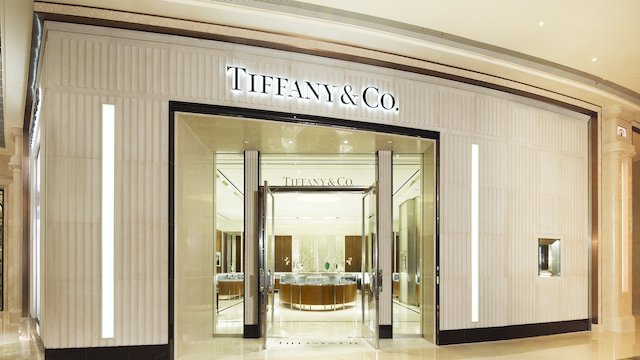Tiffany has opened its new fiscal year with another set of numbers devoid of any sparkle.
Total worldwide sales declined by 7 per cent, with same-store sales down 9 per cent. The latest Tiffany results come off the back of negative growth in the prior year, which means that over a two year period Tiffany’s sales are down by almost 12 per cent. Once again, declines were seen across almost all regions – with Japan the only notable exception.
The slide in sales, and in store productivity, has taken its toll on the bottom line where net income fell by 16.6 per cent over the prior year, and by 30.3 per cent over the same period two years ago.
A slight slowdown in Chinese consumption, as well as a more marked slowdown in mainland visitor numbers to Hong Kong, have harmed sales in the important Asia Pacific region. Meanwhile, in Europe, negative economic headwinds and lower consumer confidence have likely dissuaded some consumers from purchasing expensive jewellery.
Tiffany attributes some of the worldwide decline to the stronger dollar, which is affecting earnings from its overseas operations as well as weakening spending by tourists at its US stores. This is, of course, part of the story but the figures also tell a tale of a brand that is now finding it more of a struggle to connect with consumers in a way that it once did. This is especially so in the competitive North American market.
Our own data show that over the past three years Tiffany has suffered from a decline in both the number of American consumers who consider it for jewellery purchases as well as the proportion who actually end up buying from it – despite overall interest in jewelry remaining strong. This dynamic is a particular problem in the jewellery sector, where the fact that customers buy infrequently gives Tiffany little opportunity to recapture ‘lost’ spending.
This decline in customer share is evident among most shopper segments, including more affluent households. It is especially pronounced among affluent younger shoppers where the brand is seen as representing ‘old world luxury’. This is not an negative view, but equally it is not a positioning that chimes with the lifestyles and values of this cohort. Worryingly, this group will become an increasingly important constituent of the market as population demographics shift over time.
The main issue, however, is one of brand image. Tiffany needs to reconnect with consumers and make itself relevant. As much as this can be difficult in the slow moving jewellery sector, it is vital if the group is to reverse the slide in shopper numbers and in sales. Such a reconnection is not likely to yield an immediate uplift, so even if it starts to correct the problem now our outlook for the current year remains negative.
- Neil Saunders is CEO of retail analysts Conlumino.






